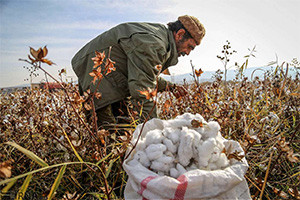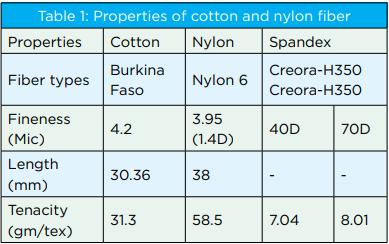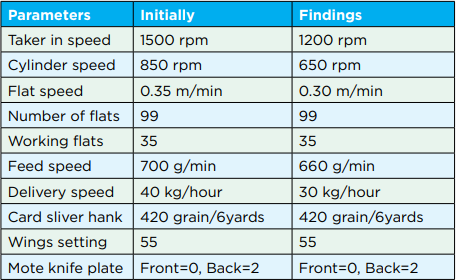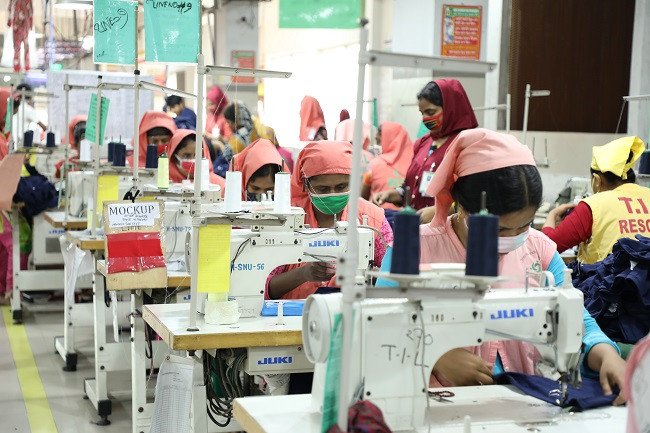The Bangladesh Bank, the country’s central bank, has forecast a decline in GDP growth of the country for fiscal 2024-25 due to political unrest that erupted in July-August 2024. The GDP growth for FY25 was targeted at 6.8 per cent. Additionally, the country struggled with high inflation as per the bank’s quarterly report. The inflation peaked in July at 11.66 per cent, then continued to drop to 10.49 per cent in August and 9.92 per cent in September. The new interim government was expected to initiate and implement comprehensive reform measures, including economic reforms, towards achieving macroeconomic stability and ensuring governance in the financial sector. The balance of payment was also expected to improve with healthy inflows of remittances and substantial foreign assistance from several multilateral organisations and development partners. From textile and garment industry perspective, the political unrest remained a major disruptor during the year.
Textile and garment industry of Bangladesh is a vital pillar of its economy that accounts for over 80 per cent of the country’s total export earnings and contributes approximately 11 per cent to the GDP. The industry employs millions of people. The sector faced a severe crisis due to a volatile mix of political unrest marked by violent protests, and catastrophic floods in August. The situation threatened to unravel the years of growth and global presence of the sector. The unprecedented anti-government protests led to resigning and fleeing of reigning Prime Minister from the country. The political unrest disrupted factory operations as they were forced to close during the peak season of Christmas shipments and the booking of next season’s orders. The Bangladesh Garment Manufacturers and Exporters Association (BGMEA) estimated a shortfall of ? 6,400 crore ($534 million) due to shutdowns and communication breakdowns disrupting both export activities and production, resulting in an expected shortfall of nearly $45 billion in export target for 2024.
LNG shortage
Starting in June, the Bangladesh textile industry continued facing severe gas (LNG) shortage, due to damage sustained by one of the two floating LNG terminals in the Bay of Bengal, exacerbated by cyclone Remal. The gas crisis caused a drastic reduction in the country’s textile production, with some factories operating at less than 30 per cent capacity and others closing temporarily. All these created bottlenecks in the global supply chain. Together, political unrest and gas shortage feared to push international buyers to potentially adopt a ‘Bangladesh-plus-one’ strategy. There were even reports of the US, Germany, the UK and Canada – the major investors in Bangladesh’s apparel industry, deliberating to shift their sourcing to other Asian countries such as Vietnam, India and Sri Lanka.
Delays increased costs
While Bangladesh textile industry was affected by garment workers’ protests in 2023, the political unrest, floods and LNG crisis impacted the nation in 2024. Since many international fashion retail chains, such as Zara & H&M, depend heavily on Bangladesh for supplies of affordable clothing, the aforementioned disruptions delayed garment exports to many such retailers which resulted in massive demurrage charges. Furthermore, the internet blackout hampered tracking of garment production, and with factory closures and reduced capacities the orders were delayed. The overseas buyers were forced to wait longer for their products, and in the process, leading to increased costs and complicated logistics.
Workers’ plight
ITUC Global Rights Index 2024 found Bangladesh among the ten worst countries for working people. Since the minimum wages protests in 2023, many workers and trade union activists have been arrested, according to media reports from the country. The man-made as well as natural crisis in 2024 worsened the already fragile conditions for workers and significantly disrupted their livelihoods. To highlight and address this issue, IndustriALL Bangladesh Council (IBC) engaged with the BGMEA and BKMEA (Bangladesh Knitwear Manufacturers and Exporters Association) to demand the protection of wages. The demand also included ensuring wages for all workers for the curfew period, no retrenchment or harassment of workers due to the situation, no job losses, respecting and safeguarding the safety and rights of all workers and their families, and engagement in dialogue with trade unions, particularly in regard to labour law reforms, minimum wages and employment policies. The demand called on the government to restore human rights and equity for victims of state violence, besides providing fair compensation and improved workplace safety.
Sourcing guidelines
A joint call was made by a coalition of prominent international organisations including Amfori, Cascale, Ethical Trade Denmark, Ethical Trade Norway, the Ethical Trading Initiative (ETI), ETI Sweden, the Fair Labor Association, Fair Wear Foundation, and Mondiaal FNV, to the companies operating in and sourcing from Bangladesh to conduct their business responsibly. The appeal came in the light of disruptions in Bangladesh that had significant repercussions on the country’s garment, footwear, and accessories industries.
The prevalent concerns, such as reports of unpaid or reduced wages for workers in July and the extended overtime being demanded of factory employees, were highlighted in the appeal, underscoring the critical need for responsible business practices. The companies were recommended to uphold their commitments to suppliers, conduct enhanced human rights due diligence (eHRDD) in line with the UNGPs (UN Guiding Principles), have meaningful stakeholder engagement especially with workers as defined by the OECD, and implement responsible purchasing practices in accordance with the Common Framework for Responsible Purchasing Practices to mitigate potential negative impacts on workers and supply chains.
Together, these organisations represent over 3,000 international brands, retailers, suppliers, and workers involved in global supply chains, with their member companies sourcing a significant share of products and services from factories in Bangladesh.
Trade
In January 2024, Bangladesh’s apparel exports amounted to $4.97 billion, a record high for a single month, before dropping to $4.49 billion in February – a figure that registered an increase of 13.93 per cent over February 2023. The cumulative increase in exports over two months was 13.15 per cent. In the following months, apparel export reached $4.34 billion in March, $3.29 billion in April and $3.35 billion in May. For May, the export growth was 17.19 per cent down y-o-y.
For the 8-month period of FY24 ending June 30, 2024, the garment exports reached $32.86 billion – an increase of 4.77 per cent over the same period in the previous fiscal.
In a mid-June reporting, the provisional data from the Export Promotion Bureau (EPB) pegged Bangladesh’s RMG exports (Chapters 61 and 62) between July 2023 and May 2024 at $43.85 billion. This was an increase of 2.86 per cent compared to $42.63 billion in the same period of the previous fiscal. However, despite knitwear exports of $24.709 billion (up 6.15 per cent) exceeding woven garments at $19.141 billion (eased by 1.09 per cent), the overall RMG exports could not meet the $47.47 billion target set for the reported period, falling short by 7.63 per cent.
On comparing same period, home textiles export (Chapter 53 excluding 630510) declined by 24.29 per cent to $776.06 million. Collectively, woven and knitted apparel, clothing accessories, and home textiles exports constituted 85.19 per cent of Bangladesh’s total export, amounting to $51.542 billion. The export of cotton and cotton products, including yarn, waste, and fabrics (Chapter 52), rose 34.04 per cent to $502.88 million compared to $375.16 million during the same period in the previous fiscal.
The US Department of Commerce’s Office of Textiles and Apparel reported a 10.97 per cent downfall to $3.4 billion in January to June period in Bangladesh’s apparel exports to the US – the country’s largest export destination. This fall was in comparison to $3.82 billion export in the same period of the previous year. Volume wise, 1.11 billion square metres of garments were exported by Bangladesh during the reported period, which represented a 5 per cent decline from 1.17 billion square metres exported the previous year. The fall in market share in the US was attributed to long lead times, unreliable supplies and high business costs. Exporters experienced gas and electrical challenges which prevented companies from running at full capacity.
New export policy
In an early October meeting, the National Export Policy 2024-27 was approved by the council of advisers of the interim government in Bangladesh. The policy aims at close-to-doubling annual export earnings to $110 billion by FY27, and includes some new products, including handicrafts, in its priority list. The thrust areas of the policy also include development of the services sector, while textile fabrics and spinning sectors are included in the special development sectors. The interim government looked forward to a second phase of dialogue with the political parties. Out of the six reform committees, five were finalised and one was to be finalised after co-opting two or three members.
Need for circular textile policy
A study by Germany’s Gesellschaft für Internationale Zusammenarbeit (GIZ) GmbH and H&M estimated Bangladesh losing up to $5 billion in potential export revenue every year from the recycled products due to lack of a comprehensive policy framework on circular textiles. The policy, when implemented, would incentivise the recycling of post-industrial textile waste or jhut, as called locally. For this, the country needs to formalise the informal jhut sector. The study further noted that political-economic challenges have delayed an inclusive and just transition. Bangladesh’s estimated annual recycling capacity for apparel-grade yarns is between 18,000 tonnes to 24,000 tonnes, which is only 5-7 per cent of the 3,30,000 to 500,000 tonnes of cent per cent cotton and cotton-elastane waste produced annually. Over 55 per cent of this waste is exported to recycling companies worldwide, less than 5 per cent is upcycled into products like rag rugs, rag dolls and blankets, while the remaining is downcycled into stuffing materials for cushions and mattresses, incinerated onsite for energy recovery or sent to landfills.
The report additionally outlined key policy solutions for the informal sector. The solutions included improving data availability, transparency and traceability through a national jhut database, introducing industry guidelines for jhut management and recycling standards and revising VAT and tariff rules for jhut transactions. The study is, by all means, for offering economic incentives to formalise jhut collection, handling and sorting, establishing central depository systems and cluster-based sorting hubs and increasing investment environment for advanced recycling technologies. The study also recommended collaborative stakeholders’ engagement, protection of workers’ rights and safety, promotion of circular textile practices and capacity building and technology adaptation to transform the jhut sector.
Industry events
Bangladesh hosted or would host a series of industry events at the time of this feature going into print. It began 2024 by hosting Dhaka International Textile & Garment Machinery Exhibition from February 1 to February 4, 2024. The international event, held at the International Convention City in Dhaka, was organised by Chan Chao International Co., Ltd in collaboration with the Bangladesh Textile Mills Association (BTMA) and Yorkers Trade and Marketing Services Co., Ltd.
The same venue was to host three more events – two in November and one in December. First in the lineup was the two-day Bangladesh Denim Expo, scheduled for November 4 to November 5, 2024, and the second being three-day Leathertech Bangladesh event from November 21 to November 24, 2024. The third in the lineup and last of the 2024 was the 10th International Yarn & Fabrics Show. The Denim Expo covers all aspects of the denim supply chain, with exhibitors displaying related fabrics, garments, threads, machinery, finishing equipment and accessories.
Since the Bangladesh Leather and Forward Linkage Sectors (domestic as well as export) are expected to leapfrog given the quality and the capability of the Bangladesh factories to manufacture high quality products, the Leathertech has a significant role to play. Bangladesh’s leather sector is in anticipation of LWG (Leather Working Group) certification post which the markets are bound to expand and export to rise higher. Likewise, the 10th International Yarn & Fabrics Sourcing Fair is seen as the apparel fabric industry’s leading sourcing platform that showcases a comprehensive product spectrum covering the entire industry.

























